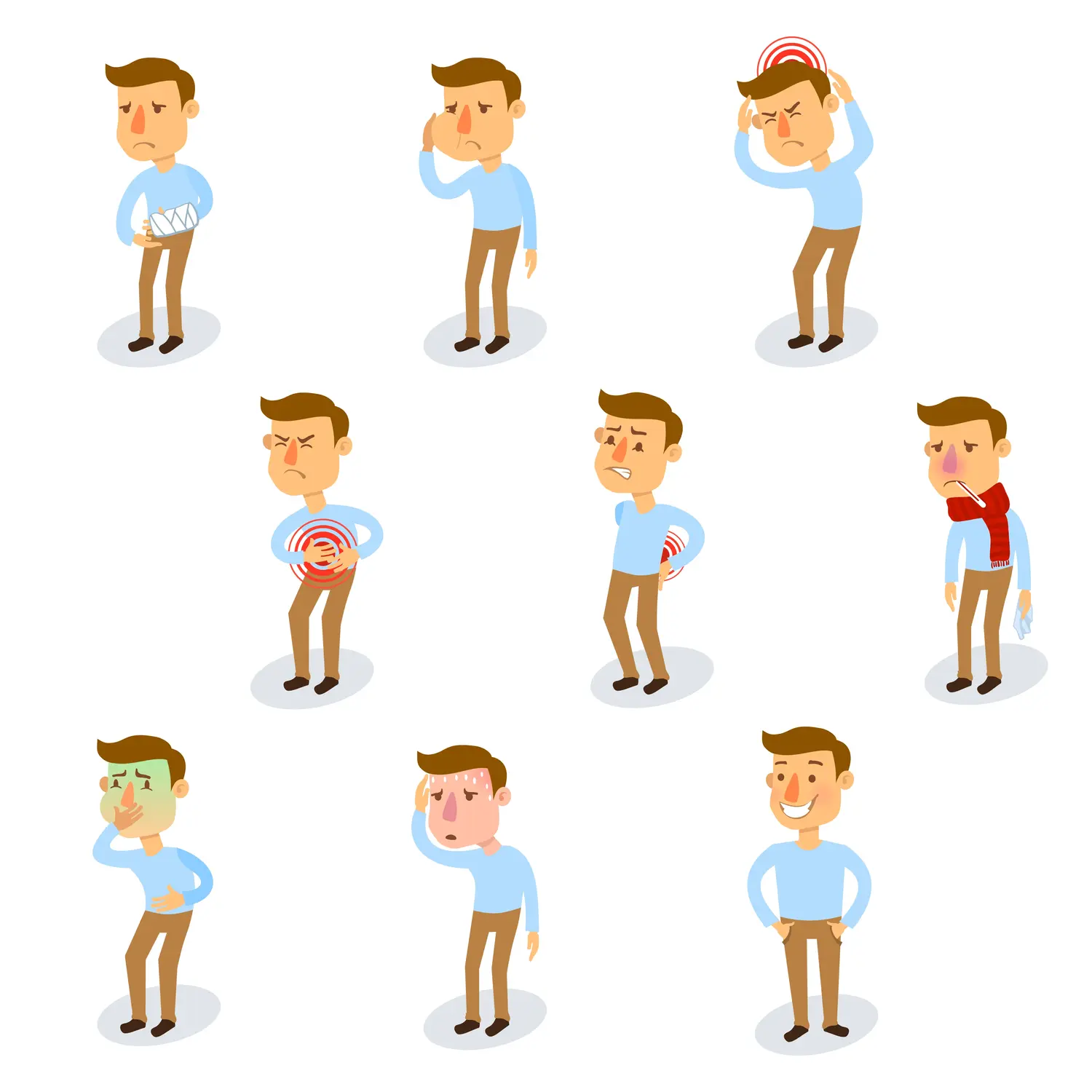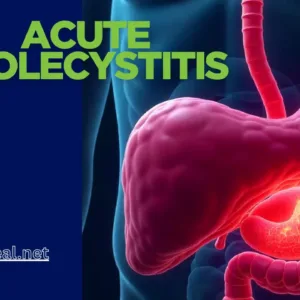Introduction
Pain is a universal human experience, serving as both a protective mechanism and a signal that something may be wrong in the body. It can range from a mild discomfort, like a headache, to a debilitating condition that affects every aspect of a person’s life. While pain is often perceived as a physical sensation, it is also deeply intertwined with emotional, psychological, and social factors. Understanding the complexities of pain is essential for effective management and treatment.
The experience of pain is subjective, meaning that each person may feel and react to it differently, even when facing the same condition. This variability make its management a challenging but critical aspect of healthcare.
Advancements in medicine have led to a better understanding of pain and its mechanisms, allowing for a more comprehensive approach to management. From medications and physical therapies to psychological support and alternative treatments, managing pain often requires a combination of strategies tailored to the individual.
Classification
Pain can be classified into different types based on its characteristics, causes, and how it affects the body. Here are the main types of pain along with examples:
1. Acute Pain
- Description: Acute pain is sudden, sharp pain that typically lasts for a short duration, usually less than six months. It’s often a direct response to tissue damage, such as an injury or surgery, and usually resolves once the underlying cause is treated.
- Examples:
- Post-Surgical Pain: Pain experienced after undergoing a surgical procedure, such as an appendectomy or knee replacement.
- Broken Bone: The intense pain felt immediately after fracturing a bone, like a broken arm from a fall.
- Burns: The sharp, stinging pain from a burn injury, whether minor or severe.
2. Chronic Pain
- Description: Chronic pain persists for longer periods, typically over six months, and can continue even after the initial injury or illness has healed. It can be continuous or intermittent and may have a significant impact on the sufferer’s quality of life.
- Examples:
- Arthritis Pain: Ongoing joint pain and stiffness from conditions like osteoarthritis or rheumatoid arthritis.
- Chronic Back Pain: Persistent pain in the lower back that may be due to disc degeneration, spinal stenosis, or previous injury.
- Fibromyalgia: A widespread pain condition characterized by muscle pain, fatigue, and tenderness in various parts of the body.
3. Neuropathic Pain
- Description: Neuropathic pain arises from damage to the nerves or the nervous system. It is often described as burning, tingling, shooting, or electric shock-like pain. This type of pain can be chronic and is often challenging to treat.
- Examples:
- Diabetic Neuropathy: Nerve damage caused by diabetes, leading to pain, numbness, and tingling, especially in the feet and hands.
- Shingles (Postherpetic Neuralgia): Severe burning pain that can persist after the shingles rash has healed, due to nerve damage caused by the herpes zoster virus.
- Sciatica Pain: Shooting pain that radiates from the lower back down the leg, caused by compression or irritation of the sciatic nerve.
4. Nociceptive Pain
- Description: Nociceptive pain is caused by the activation of nociceptors, which are pain receptors located in the skin, muscles, joints, and some internal organs. This type of pain is usually due to physical damage or potential damage to tissues.
- Examples:
- Cut or Bruise: The pain from a superficial injury, like cutting a finger or bruising from a bump.
- Osteoarthritis: Joint pain from wear and tear of cartilage, leading to bone rubbing on bone.
- Sprained Ankle: Pain and swelling caused by overstretching or tearing of the ligaments around the ankle.
5. Radicular Pain
- Description: Radicular pain occurs when a nerve root is compressed or inflamed, often resulting in pain that radiates from the spine to other areas, following the path of the affected nerve.
- Examples:
- Herniated Disc: Pain radiating from the lower back down one leg, caused by a bulging disc pressing on a nerve.
- Cervical Radiculopathy: Pain radiating from the neck into the shoulder and arm, often due to a pinched nerve in the neck.
6. Visceral Pain
- Description: Visceral pain originates from the internal organs, such as the heart, stomach, intestines, or bladder. It is often described as deep, squeezing, or aching and may be accompanied by other symptoms like nausea or sweating. These are gallbladder, kidney pain, abdominal pain, appendix pain, stomach pain etc
- Examples:
- Gallstones: Severe, cramping pain in the upper right abdomen caused by stones blocking the bile ducts.
- Irritable Bowel Syndrome (IBS): Chronic abdominal pain and cramping associated with changes in bowel habits.
- Kidney Stones: Sharp, cramping pain in the back and side, often radiating to the lower abdomen and groin.
7. Phantom Pain
- Description: Phantom pain occurs in a part of the body that has been amputated or is no longer present. Despite the absence of the limb, the brain still perceives pain signals from that area.
- Examples:
- Post-Amputation Pain: An amputee feeling pain, tingling, or itching in the area where the limb used to be.
- Mastectomy: Some women may experience phantom pain in the breast area after undergoing a mastectomy.
8. Referred Pain
- Description: Referred pain is pain perceived at a location different from the site of the actual problem. It occurs because the nerves supplying different tissues converge on the same spinal cord segments, confusing the brain’s interpretation of pain location.
- Examples:
- Heart Attack: Pain or discomfort felt in the left arm, jaw, or neck during a heart attack, despite the problem being in the heart.
- Gallbladder Disease: Pain in the shoulder or upper back caused by an inflamed gallbladder.
9. Psychogenic Pain
- Description: Psychogenic pain is pain that is primarily associated with psychological factors such as stress, anxiety, or depression, rather than a clear physical cause.
- Examples:
- Tension Headaches: Headaches triggered by stress or emotional tension.
- Somatoform Pain Disorder: Chronic pain that is believed to have a psychological origin, where the pain itself may be real, but the cause is not identifiable through physical examination.
Causes
Here are some common causes of pain:
1. Injury:
- Trauma: Accidents, falls, and blows can lead to fractures, sprains, cuts, and bruises, causing acute pain.
- Surgery: Surgical procedures often result in post-operative pain as the body heals.
2. Inflammation:
- Arthritis: Inflammatory conditions like rheumatoid arthritis or osteoarthritis cause joint pain and stiffness.
- Tendinitis: Inflammation of tendons can result in pain, particularly with movement.
3. Nerve Damage:
- Neuropathy: Conditions like diabetes can damage nerves, leading to chronic neuropathic pain.
- Shingles: A viral infection that can cause intense nerve pain, often in a specific area of the body.
4. Chronic Illness:
- Cancer: Tumors can press on nerves, bones, or other organs, leading to significant pain.
- Fibromyalgia: A chronic condition characterized by widespread musculoskeletal pain.
5. Muscle Strain:
- Overuse Injuries: Repetitive activities can strain muscles, leading to pain and discomfort.
- Muscle Cramps: Sudden, involuntary contractions of muscles can be painful.
6. Infections:
- Bacterial or Viral Infections: Conditions like abscesses, infections of the bones (osteomyelitis), or viral infections like herpes can cause pain.
- Urinary Tract Infections (UTIs): Can cause pain in the lower abdomen or back.
7. Autoimmune Disorders:
- Lupus: This condition causes inflammation and can lead to pain in joints, muscles, and other tissues.
- Multiple Sclerosis (MS): An autoimmune disease affecting the nervous system, leading to pain and discomfort.
8. Structural Abnormalities:
- Herniated Discs: Discs in the spine can press on nerves, causing back and leg pain.
- Bone Spurs: Excess bone growth can irritate surrounding tissues and nerves, leading to pain.
9. Psychological Factors:
- Stress and Anxiety: Emotional stress can amplify the perception of pain, particularly in chronic pain conditions.
- Depression: Often associated with chronic pain, depression can make pain feel worse.
10. Metabolic Disorders:
- Gout: A type of arthritis caused by the accumulation of uric acid crystals in joints, leading to intense pain.
- Osteoporosis: A condition that weakens bones, making them more susceptible to fractures and pain.
11. Genetic Factors:
- Inherited Conditions: Some people may inherit conditions that predispose them to chronic pain, such as certain types of arthritis or migraines.
Understanding the underlying cause of pain is crucial for effective management and treatment. Each cause may require a different approach, from medications and physical therapy to lifestyle changes and psychological support.
Symptoms
Pain is often accompanied by other symptoms, including:
- Inflammation: Swelling, redness, and warmth around the affected area.
- Muscle Tension: Tightness and stiffness in the muscles surrounding the painful area.
- Fatigue: Chronic pain can lead to exhaustion and lack of energy.
- Mood Changes: Irritability, depression, and anxiety often accompany chronic pain.
Diagnosis
Diagnosing the cause of pain is a critical step in developing an effective treatment plan. Here’s how healthcare professionals typically approach the diagnosis of pain:
1. Medical History
- Patient Interview: The doctor will ask about the onset, duration, and nature of the pain, including any associated symptoms.
- Previous Conditions: A detailed history of past illnesses, injuries, surgeries, and treatments helps identify potential causes of pain.
- Family History: Certain conditions, like migraines or arthritis, may run in families, providing clues to the diagnosis.
2. Physical Examination
- Inspection: The healthcare provider will visually inspect the area for signs of swelling, redness, deformity, or other abnormalities.
- Palpation: Touching and pressing on specific areas can help locate the source of pain and assess its intensity.
- Range of Motion Tests: The doctor may ask the patient to move certain body parts to determine if movement exacerbates the pain.
- Neurological Examination: This involves testing reflexes, muscle strength, and sensation to detect any nerve-related pain.
3. Pain Assessment Tools
- Pain Scales: Patients might be asked to rate their pain on a scale of 0 to 10, with 0 being no pain and 10 being the worst pain imaginable.
- Questionnaires: Tools like the McGill Pain Questionnaire (MPQ) help assess the quality, intensity, and impact of pain on daily life.
- Pain Diaries: Patients may be asked to keep a diary of their pain, noting factors that worsen or relieve it, and how it affects their activities.
4. Imaging Tests
- X-rays: Useful for detecting bone fractures, dislocations, and certain degenerative conditions like arthritis.
- Magnetic Resonance Imaging (MRI): Provides detailed images of soft tissues, including muscles, ligaments, and discs, helping diagnose conditions like herniated discs or torn ligaments.
- Computed Tomography (CT) Scan: Offers cross-sectional images of the body, useful for diagnosing complex bone and joint disorders, as well as internal injuries.
- Ultrasound: Often used to visualize muscles, tendons, and other soft tissues, especially in cases of suspected inflammation or tears.
5. Laboratory Tests
- Blood Tests: Can identify infections, inflammatory markers, or autoimmune conditions that may be causing pain (e.g., rheumatoid arthritis, lupus).
- Urine Tests: Useful for diagnosing conditions like kidney stones or infections that can cause pain in the back or abdomen.
- Nerve Studies: Electromyography (EMG) and nerve conduction studies help diagnose neuropathic pain by measuring electrical activity in muscles and nerves.
6. Diagnostic Injections
- Nerve Blocks: Injections of anesthetics near specific nerves can help determine if they are the source of pain.
- Joint Injections: Injecting a numbing agent or corticosteroid into a joint can both provide relief and help diagnose the cause of pain.
7. Specialized Tests
- Bone Scans: Detects bone abnormalities, including infections, fractures, and cancer.
- Discography: A test to determine if a specific disc in the spine is the source of back pain.
- Psychological Evaluation: In cases of chronic pain, a psychological assessment might be conducted to evaluate the impact of pain on mental health and identify any contributing psychological factors.
8. Consultation with Specialists
- Referral to Specialists: Depending on the findings, the patient might be referred to a specialist, such as a neurologist, orthopedic surgeon, rheumatologist, or pain management specialist, for further evaluation and treatment.
9. Monitoring and Reassessment
- Follow-Up Visits: Ongoing assessment of the pain and its response to treatment is crucial, especially in cases of chronic pain. Adjustments to the diagnosis and treatment plan may be necessary based on the patient’s progress.
Management
Pain management is a multifaceted approach that aims to reduce pain and improve the quality of life for individuals experiencing discomfort. Here are some commonly used pain management strategies:
1. Medications
- Nonsteroidal Anti-Inflammatory Drugs (NSAIDs):
- Examples: Ibuprofen, aspirin, naproxen.
- Uses: These drugs reduce inflammation, alleviate pain, and are commonly used for conditions like arthritis, muscle injuries, and headaches.
- Acetaminophen:
- Example: Tylenol.
- Uses: Effective for reducing mild to moderate pain and fever, often used for headaches and minor aches.
- Opioids:
- Examples: Morphine, oxycodone, hydrocodone.
- Uses: Prescribed for severe pain, such as post-surgical pain or pain from cancer. Due to their potential for addiction, they are used cautiously and under strict medical supervision.
- Antidepressants:
- Examples: Amitriptyline, duloxetine.
- Uses: Often used in the management of chronic pain conditions, particularly neuropathic pain, fibromyalgia, and migraines.
- Anticonvulsants:
- Examples: Gabapentin, pregabalin.
- Uses: Effective in treating neuropathic pain by stabilizing nerve activity.
- Topical Analgesics:
- Examples: Capsaicin cream, lidocaine patches.
- Uses: Applied directly to the skin to relieve localized pain, such as that from arthritis or muscle strains.
2. Physical Therapy
- Exercise Therapy:
- Uses: Tailored exercise programs can strengthen muscles, improve flexibility, and reduce pain, especially in conditions like back pain and arthritis.
- Manual Therapy:
- Techniques: Massage, joint mobilization, and manipulation.
- Uses: Helps reduce muscle tension, improve mobility, and alleviate pain.
- Heat and Cold Therapy:
- Uses: Cold packs reduce inflammation and numb pain, while heat packs relax muscles and improve blood flow to the affected area.
3. Psychological Therapies
- Cognitive Behavioral Therapy (CBT):
- Uses: Helps patients manage the emotional and psychological aspects of chronic pain by changing negative thought patterns and behaviors.
- Mindfulness and Relaxation Techniques:
- Examples: Meditation, deep breathing exercises, progressive muscle relaxation.
- Uses: Reduces stress and helps manage pain by promoting relaxation and increasing pain tolerance.
- Biofeedback:
- Uses: Teaches patients how to control physiological functions, such as heart rate and muscle tension, to reduce pain.
4. Interventional Procedures
- Injections:
- Examples: Corticosteroid injections, epidural injections.
- Uses: Administered directly to the site of pain or inflammation to provide relief, particularly in conditions like joint pain or sciatica.
- Nerve Blocks:
- Uses: Anesthetic injections that block pain signals from specific nerves, providing relief in conditions like chronic migraines or complex regional pain syndrome (CRPS).
- Radiofrequency Ablation (RFA):
- Uses: A procedure that uses heat to destroy nerve fibers carrying pain signals, often used for chronic back or neck pain.
- Spinal Cord Stimulation:
- Uses: Involves implanting a device that sends electrical signals to the spinal cord to reduce pain, typically used in cases of severe, chronic pain that hasn’t responded to other treatments.
5. Alternative Therapies
- Acupuncture:
- Uses: Involves the insertion of thin needles into specific points on the body to relieve pain, particularly for conditions like chronic headaches, back pain, and osteoarthritis.
- Chiropractic Care:
- Uses: Spinal manipulation and adjustments to improve function and reduce pain, especially for back and neck pain.
- Herbal Remedies and Supplements:
- Examples: Turmeric, ginger, and omega-3 fatty acids.
- Uses: Some natural supplements have anti-inflammatory properties that can help manage pain.
6. Lifestyle Modifications
- Regular Exercise:
- Uses: Engaging in physical activities, such as walking, swimming, or yoga, can strengthen muscles, improve flexibility, and reduce pain over time.
- Healthy Diet:
- Uses: A balanced diet rich in anti-inflammatory foods, such as fruits, vegetables, and whole grains, can help manage pain and improve overall health.
- Weight Management:
- Uses: Maintaining a healthy weight reduces stress on joints and muscles, alleviating pain associated with conditions like osteoarthritis.
- Adequate Sleep:
- Uses: Ensures the body gets the rest it needs to heal and recover, which can significantly impact pain levels.
7. Complementary Therapies
- TENS (Transcutaneous Electrical Nerve Stimulation):
- Uses: A device that sends low-voltage electrical currents to the skin to disrupt pain signals and provide relief.
- Massage Therapy:
- Uses: Helps reduce muscle tension, improve circulation, and promote relaxation, which can be beneficial for pain management.
8. Patient Education and Support
- Education:
- Uses: Teaching patients about their condition and pain management options empowers them to take an active role in their care.
- Support Groups:
- Uses: Connecting with others who have similar pain experiences can provide emotional support and coping strategies.
9. Surgical Options
- Surgery:
- Examples: Joint replacement, spinal surgery, or nerve decompression.
- Uses: Considered when other treatments have failed and the pain is caused by a structural issue that can be corrected surgically.
Conclusion
Pain management is a personalized process that may involve a combination of treatments tailored to the individual’s specific needs and condition. Working closely with healthcare providers, patients can find the most effective strategies to manage their pain, improve function, and enhance their quality of life. Regular follow-ups and adjustments to the treatment plan ensure that the management approach remains effective and responsive to the patient’s changing needs.
Faqs,
What causes lower left abdominal pain in females ?
Lower left abdominal pain in females can be caused by ovarian cysts, endometriosis, IBS, diverticulitis, ectopic pregnancy, menstrual cramps, or a UTI.
How to stop tooth pain fast ?
To stop tooth pain fast, use pain relievers, apply a cold compress, rinse with saltwater, apply clove oil, or use a numbing gel.
Does constipation causes back pain ?
Yes, constipation can cause back pain. The buildup of stool in the intestines can create pressure, leading to discomfort or pain in the lower back.
Where is liver pain located ?
Liver pain is typically located in the upper right abdomen, just below the rib cage. It may also radiate to the right shoulder or back.
What causes hip pain during pregnancy ?
Hip pain during pregnancy is often caused by hormonal changes, weight gain, posture shifts, and pelvic girdle pain. Gentle exercise, proper posture, and supportive pillows can help alleviate discomfort.
When to worry about leg pain?
When to worry about leg pain: Sudden, severe pain Pain that worsens with activity or at rest Pain accompanied by swelling, redness, or warmth Pain that interferes with daily activities Pain that lasts for more than a few days If you experience any of these symptoms, it's important to consult a healthcare professional.
How clove oil effective for tooth pain?
Clove oil can provide temporary relief from tooth pain. It contains eugenol, a natural anesthetic that can numb the area. How to use clove oil for tooth pain: Dilute the clove oil: Because it can be irritating, it's best to dilute it with a carrier oil like coconut or olive oil. Apply to the affected area: Use a cotton swab to apply a small amount of the diluted clove oil directly to the painful tooth or gum. Avoid swallowing: Be careful not to swallow the clove oil, as it can be toxic in large quantities. Note: While clove oil can provide temporary relief, it's important to see a dentist to address the underlying cause of your tooth pain.





